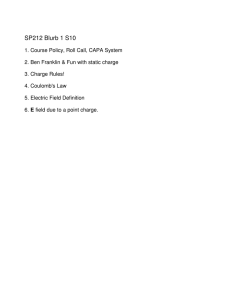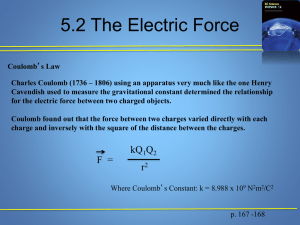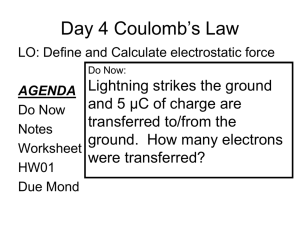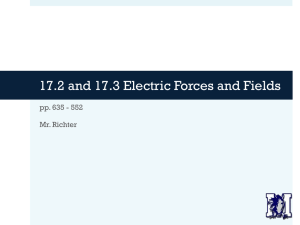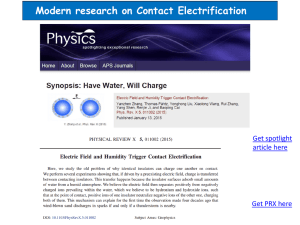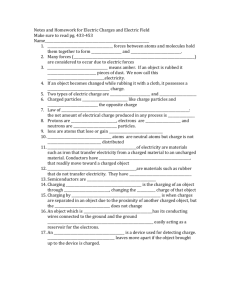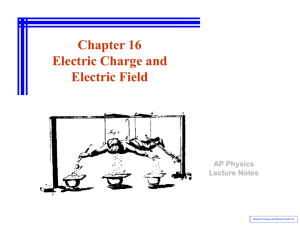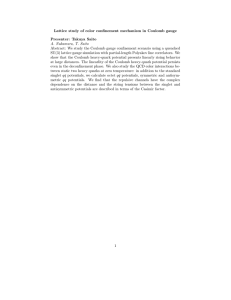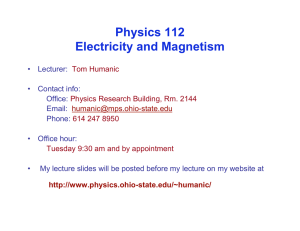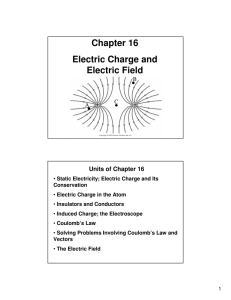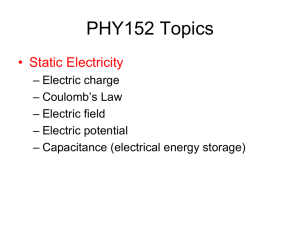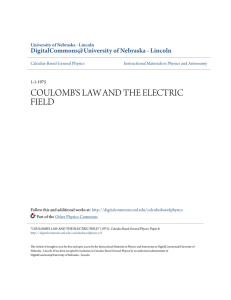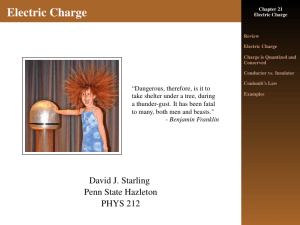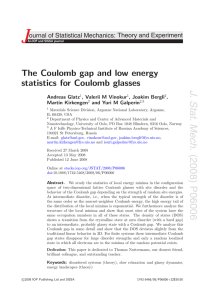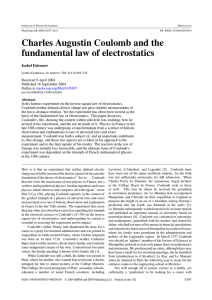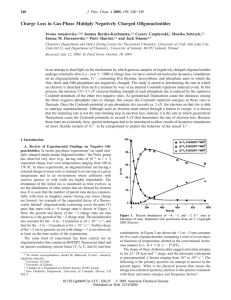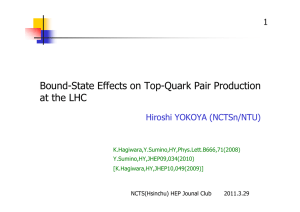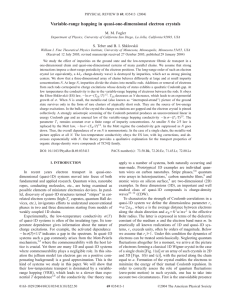Ch 16: Electrostatics Coulomb’s Law electric charges that are not moving
advertisement
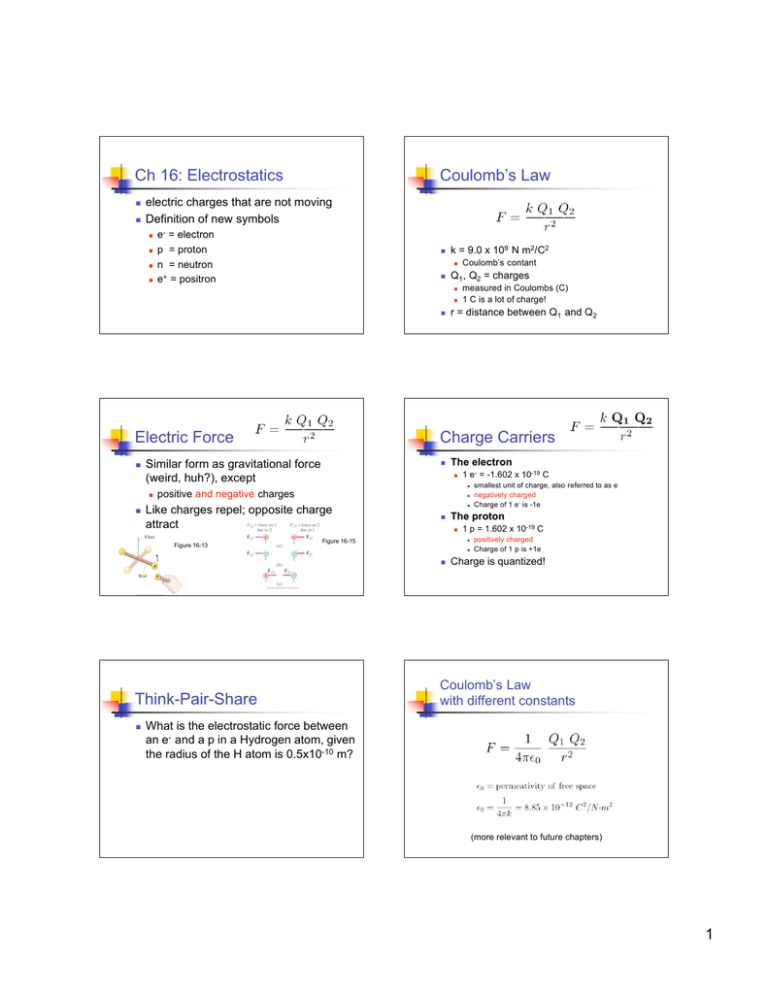
Ch 16: Electrostatics Coulomb’s Law electric charges that are not moving Definition of new symbols e- = electron p = proton n = neutron e+ = positron k = 9.0 x 109 N m2/C2 Q1 , Q2 = charges Electric Force The electron 1 e - = -1.602 x 10-19 C Like charges repel; opposite charge attract Think-Pair-Share smallest unit of charge, also referred to as e negatively charged Charge of 1 e- is -1e The proton Figure 16-15 1 p = 1.602 x 10-19 C r = distance between Q1 and Q2 positive and negative charges Figure 16-13 measured in Coulombs (C) 1 C is a lot of charge! Charge Carriers Similar form as gravitational force (weird, huh?), except Coulomb’s contant positively charged Charge of 1 p is +1e Charge is quantized! Coulomb’s Law with different constants What is the electrostatic force between an e- and a p in a Hydrogen atom, given the radius of the H atom is 0.5x10-10 m? (more relevant to future chapters) 1 Illustrations of Coulomb’s Law Comb & Paper Illustrations of Coulomb’s Law Electroscope induction Illustrations of Coulomb’s Law Van de Graaff generator & pie plates conduction Illustrations of Coulomb’s Law Flowing water & charged rod Conductor versus Insulator Conductor e-’s travel Insulator charge separation within molecules 2


